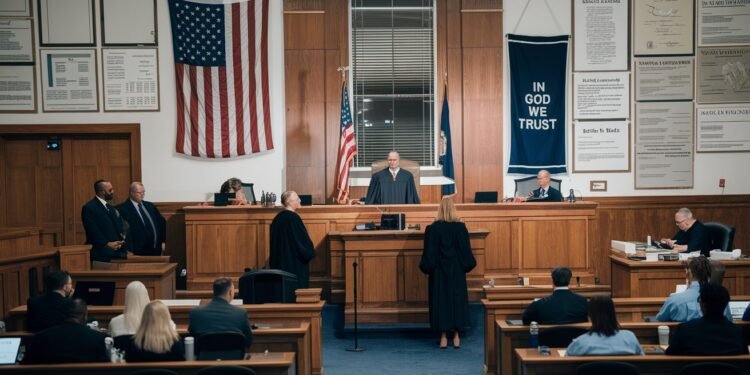Naveena .K ,IVth Year Chettinad School of Law,CARE,Chennai
INTRODUCTION AND BACKGROUND OF JUDGEMENT
Important details of criminal conspiracy under Indian law are covered in the 1955 case of Topandas v. The State of Bombay, specifically the requirement that there be several participants for a conspiracy accusation to be upheld. In this ruling, Justice Natwarlal H. Bhagwati emphasizes the need for at least two parties to be involved in a criminal agreement, emphasizing the legal premise that one cannot conspire alone.
Four people in this case, including the appellant Topandas, were accused of participating in a criminal conspiracy to carry out several unlawful acts related to import licenses. The accused included utilizing fake bills of entry and deceitfully influencing Bombay’s Deputy Chief Controller of Imports to provide import permits for items such as watches, bicycles, and fake silk pieces.
Initially, the Presidency Magistrate cleared all four of the accused. A High Court appeal by the State of Bombay, however, overturned Topandas’s acquittal and found him guilty of conspiracy in violation of Section 120-B of the Indian Penal Code (IPC) despite the other co accused’s acquittal. Topandas thereupon requested special permission to file an appeal with the Supreme Court, especially contesting the validity of his conviction because the other accused conspirators had been found not guilty. In the end, the Supreme Court overturned Topandas’s conviction under Section 120-B IPC, ruling that one person could not be found guilty of conspiracy when all other defendants had been found not guilty.
- ) FACTS OF THE CASE
Parties Involved: By Section 120-B of the Indian Penal Code, the appellant, Topandas, and three other people were accused of criminal conspiracy (IPC).
Charges: It was claimed that the defendants planned to carry out several unlawful activities, such as using falsified documents of entry, getting import permits for watches, bicycles, and fake silk products from the Deputy Chief Controller of imports in fraud
Trial Findings: All four defendants were found not guilty of the accusations by the Presidency Magistrate.
Appeal: The State of Bombay filed an appeal with the High Court, which upheld the other three accused people’s acquittals while overturning Topandas’s conspiracy conviction. Supreme Court Appeal: Topandas then requested special permission to file an appeal, arguing that his conviction was erroneous in light of his co-accused’s acquittals.
- ) LEGAL ISSUES RAISED
- The requirement for multiple parties to constitute a valid conspiracy, as outlined in Section 120-A of the IPC.i
- Whether the acquittal of the other accused rendered the conviction of Topandas legally untenable, given that one cannot conspire alone.
- E) PETITIONER/ APPELLANT’S ARGUMENTS
The petitioner contended that his conviction under Section 120-B was unconstitutional because all co-accused had been acquitted, underlining that conspiracy requires at least two people. He argued there was insufficient evidence to connect him to any co-conspirators. He cited examples that show that if all co-accused are acquitted, the remaining accused cannot be convicted of conspiracy. Topandas pointed out that the charges under Sections 471, 465, and 420 were distinct and could not establish a conspiracy conviction. He argued that condemning him based on the acquittal of others violated his right to a fair trial iiand due process.
- ) RESPONDENT’S ARGUMENTS
Despite the other accused’s acquittal, the respondent claimed Topandas was involved in a conspiracy. They argued that his activities demonstrated a clear intent to do criminal acts. The respondent claimed that the illegal conduct imputed to Topandas was part of a bigger scheme, implying that his participation was critical to the conspiracy, even if others were cleared. They referenced case law to show that a conviction might still stand provided the evidence sufficiently indicated that the accused behaved with conspiracy purposes, regardless of the status of the co-accused. The respondent underlined the necessity of upholding the law and discouraging similar actions, claiming that acquitting Topandas would jeopardize the integrity of the legal system.
- ) RELATED LEGAL PROVISIONS
- Indian Penal Code (IPC),
▪ Section 120-A
▪ Section 120-B
▪ Section 471iii
▪ Section 465iv
▪ Section 420v
- ) JUDGEMENT
On October 14, 1955, the Supreme Court of India rendered its decision in the case of Topandas v. The State of Bombay. The following are the main points of the decision:
The Suspension of Conviction Under Section 120-B:
The conviction of Topandas for criminal conspiracy under Section 120-B of the Indian Penal Code was deemed void by the court. The justification behind this was that a conspiracy needs the participation of two or more people. As the other three suspects were found not guilty, a legitimate conspiracy involving only Topandas could not exist.
Legal Principle:
The Court highlighted the principle that one person cannot collude on their own. It was emphasized that at least two people had to agree to do an illegal act for there to be a legitimate conspiracy allegation. Legal literature and precedents backed this concept, which says that if all co-accused but one is found not guilty, the remaining accused must likewise be found not guilty unless there is proof of a conspiracy with a person who is not mentioned in the accusation.
Reference to Precedents:
The verdict cites judicial precedents, such as The King v. Plummervi, which state that if everyone but one person charged with conspiracy is acquitted, the conviction of the remaining accused cannot stand.
Upholding Other Convictions:
While the Court reversed Topandas’ conviction under Section 120-B, it sustained his convictions under Sections 471 (using falsified papers), 465 (forgery), and 420 (cheating). The Court noted that these charges were separate from the conspiracy charge and had a proper legal basis.
- ) CONCLUSION :
The Supreme Court concluded that the conviction for conspiracy was illegal and directed that Topandas’s sentence related to that conviction be set aside. However, his sentences for the other offences remained intact.
- J) REFERENCES
- Important Statutes Referred
- Indian Penal Code, 1860 (IPC)



